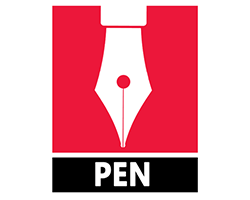- Al-Taweel, S.K., Azzam, C. R., Khaled, K. A. and Abdel-aziz, R. M. (2021). Improvement Of Stevıa (Stevia rebaudiana Bertoni) And Steviol Glycoside Through Traditional Breeding And Biotechnological Approaches. SABRAO Journal of Breeding and Genetics, 53(1):88-111. [Google Scholar]
- Azizan, N. I., Shamsiah, A., Hasan, N. A. and Hussein, S. (2020). Morphological Characterization Of Colchicine-Induced Mutants In Stevia rebaudiana. IOP Conference Series: Earth and Environmental Science, 757(1):012006. https://doi.org/10.1088/1755-1315/757/1/012006 [Google Scholar] [Crossref]
- Brandle, J. E. and Rosa, N. (1992). Heritability for yield, leaf: stem ratio and stevioside content estimated from landrace cultivarof Stevia rebaudiana. Can. J. Plant Sci. 72: 1263-1266. [Google Scholar]
- Chen, C., Hou, X., Zhang, H., Wang, G., and Tian, L. (2011). Induction Of Anthurium andraeanum “Arizona” Tetraploid By Colchicine In Vitro. Euphytica, 181(2), 137-145. https://doi.org/10.1007/s10681-010-0344-3 [Google Scholar] [Crossref]
- Crammer, B. and Ikan, R. (1986). Sweet glycosides from the stevia plant. Chem. Britain 22: 915-916. [Google Scholar]
- Elçi, Ş. and Sancak, C. (2013). Sitogenetikte Araştırma Yöntemleri ve Gözlemler. Ankara Üniversitesi Ziraat Fakültesi Yayınları, Ankara. [Google Scholar]
- Ghonema, M., Khaled, A. E., Abdelsalam, N. R. and İbrahim, N. M. (2015). Physico-Chemical Properties Of Chromatin, Proline Content; And Induction Of Polyploidy In Stevia rebaudiana (Bertoni). Alexandrıa Scıence Exchange Journal, 36, 147-156. https://doi.org/10.21608/asejaiqjsae.2015.2865 [Google Scholar] [Crossref]
- Goluch, A. T., Kawka-Lipińska, M., Wielgusz, K. and Praczyk, M. (2021). Polyploidy In Industrial Crops: Applications And Perspectives In Plant Breeding. Agronomy, 11(12), 2574. https://doi.org/10.3390/agronomy11122574 [Google Scholar] [Crossref]
- Grad, W. E. and Gomaa, S. E. (2020). Polypolidy And Sweetener Induction In Different Stevia Varieties Using Colchicine. Egypt. Journal Of Plant Breed, 24(3), 697– 715. https://doi.org/10.12816/EJPB.2020.170609 [Google Scholar] [Crossref]
- Kaplan, B. and Turgut, K. (2019). Improvement Of Rebaudioside A Diterpene Glycoside Content In Stevia rebaudiana Bertoni Using Clone Selection. Turkish Journal of Agriculture and Forestry, 43: 232-240. https://doi.org/10.3906/tar-1803-37 [Google Scholar] [Crossref]
- Kinghorn, A. D. and Soejarto, D. D. (1985). Current status of stevioside as a sweetening agent forhuman use. In H. Wagner, H. Hikino, and N. R. Farnsworth, eds. Economic and medical plant research. Academic Press, London, UK. [Google Scholar]
- Madan, S., Ahmad, S., Singh, G. N., Kohli, K., Kumar, Y., Singh, R. and Garg, M. (2010). Stevia rebaudiana (Bert.) Bertoni: A review. Indian J Natur Prod Resour 1: 267–286. [Google Scholar]
- Madani, H., Escrich, A., Hosseini, B., Sanchez-Muñoz, R., Khojasteh, A. and Palazon, J. (2021). Effect Of Polyploidy Induction On Natural Metabolite Production In Medicinal Plants. Biomolecules, 11(6), 899. [Google Scholar]
- Mahdi, S. A., Meena, C. M. and Tholakabavi, A. (2018). Induction Of Genetic Variability By Colchicine Treatment In Stevia rebaudiana Bertoni. AL-Qadisiyah Journal of pure Science, 23(3), 161-173. https://doi.org/10.29350/jops.2018.23.3.903 [Google Scholar] [Crossref]
- Oliveira, V., Forni-Martins, E., Magalhães, P. And Alves, M. (2004). Chromosomal And Morphological Studies Of Diploid And Polyploid Cytotypes Of Stevia rebaudiana (Bertoni) Bertoni (Eupatorieae, Asteraceae). Genetics and Molecular Biology, 27(2), 215-222. https://doi.org/10.1590/S1415-47572004000200015 [Google Scholar] [Crossref]
- Rameshsingh, C. N., Hegde, S. N. and Vasundhara, M. (2015). Evaluation Of Field Performance Of Polyploids Stevia rebaudiana (Bertoni) And Their In Vitro Propagation. Research Journal of Agricultural Sciences, 6(2), 255-258. [Google Scholar]
- Singh, S. D. and Rao, G. P. (2005). Stevia: The herbal sugar of the 21st century. Sugar Technol. 7: 17-24. [Google Scholar]
- Şahin, M. (2019). Bazı Yabani Ayçiçeği Türlerinin Çekirdek Dna İçeriklerinin Belirlenmesi. Yüksek lisans tezi, Trakya Üniversitesi, Fen Bilimleri Enstitüsü, Edirne. [Google Scholar]
- Şehirali, S. and Özgen, M. (2013). Bitki Islahı. Ankara Üniversitesi Ziraat Fakültesi Yayınları, Ankara. [Google Scholar]
- Talei, D. and Fotokian, M. H. (2020). Improving Growth Indices And Productivity Of Phytochemical Compounds In Lemon Balm (Melissa officinalis L.) Through Induced Polyploidy. BioTechnologia, 101(3), 215-226. https://doi.org/10.5114/bta.2020.97880 [Google Scholar] [Crossref]
- Talei, D., Nekouei, M. K., Mardi, M. and Kadkhodaei, S. (2020). Improving Productivity Of Steviol Glycosides In Stevia rebaudiana Via Induced Polyploidy. Journal of Crop Science and Biotechnology, 23, 301–309. https://doi.org/10.1007/s12892-020-00038-5 [Google Scholar] [Crossref]
- Tavan, M., Mirjalili, M. H., & Karimzadeh, G. (2015). In Vitro Polyploidy Induction: Changes In Morphological, Anatomical And Phytochemical Characteristics Of Thymus persicus (Lamiaceae). Plant Cell, Tissue and Organ Culture, 122(3), 573-583. [Google Scholar]
- Tuna, M., Khadka, D. K., Shrestha, M. K., Arumuganathan, K. and Golan-Goldhirsh, A. (2004). Characterization of natural orchardgrass (Dactylis glomerata L.) populations of the Thrace Region of Turkey based on ploidy and DNA polymorphisms. Euphytica, 135: 39-46. [Google Scholar]
- Turgut, K., Ozyigit, Y., Ucar, E., and Tutuncu, B. (2013). Cultivation studies of Stevia rebaudiana bertoni in Turkey. Planta Medica, 79(13), PN112. [Google Scholar]
- Uskutoğlu, T., Uskutoğlu, D. and Turgut, K. (2019). Effects On Pre-Treatment And Different Tissue Culture Media For Androgenesis In Stevia rebaudiana Bertoni. Sugar Tech (Nov-Dec 2019) 21(6):1016–1023. [Google Scholar]
- Xiang, Z., Tang, X., Liu, W. and Song, C. (2019). A Comparative Morphological And Transcriptomic Study On Autotetraploid Stevia rebaudiana (Bertoni) And Its Diploid. Plant Physiology and Biochemistry, 143, 154–164. https://doi.org/10.1016/j.plaphy.2019.09.003 [Google Scholar] [Crossref]
- Yadav, A. K., Singh, S., Yadav, S. C., Dhyani, D., Bhardwaj, G., Sharma, A. and Singh, B. (2013). Induction And Morpho-Chemical Characterization Of Stevia rebaudiana Colchiploids. Indian Journal of Agricultural Sciences, 83(2): 159–65. [Google Scholar]
- Yadav, A.K., Singh, S., Dhyani, D. and Ahuja, P. S. (2011). A review on the improvement of stevia [Stevia rebaudiana (Bertoni)]. Can J Plant Sci, 91: 1-27. [Google Scholar]
- Zhang, H., An, S., Hu, J., Lin, Z., Liu, X., Bao, H. and Chen, R. (2018). Induction, Identification And Characterization Of Polyploidy In Stevia rebaudiana Bertoni. Plant Biotechnology, 35: 81–86. https://doi.org/10.5511/plantbiotechnology.17.1227a [Google Scholar] [Crossref]
|

